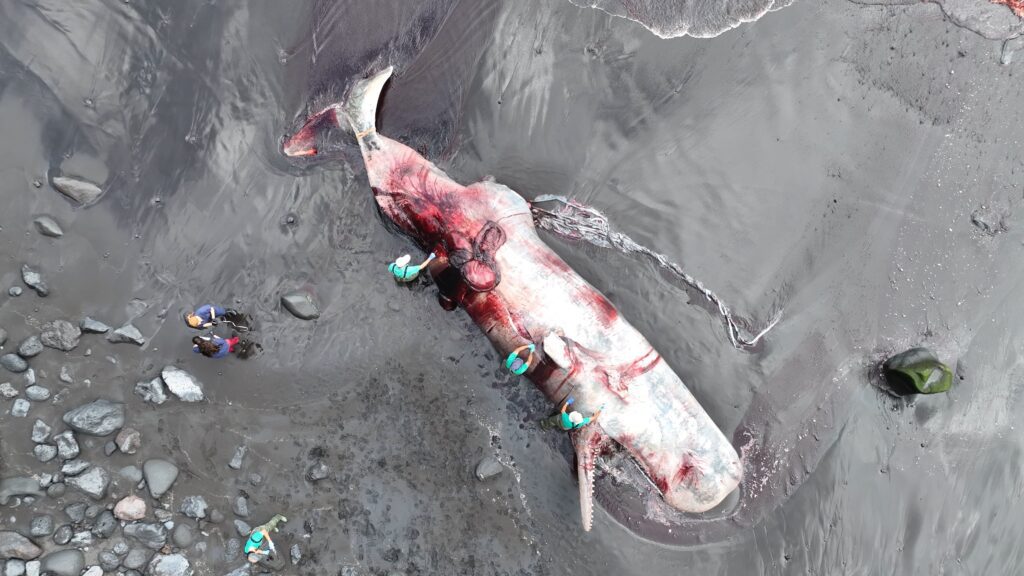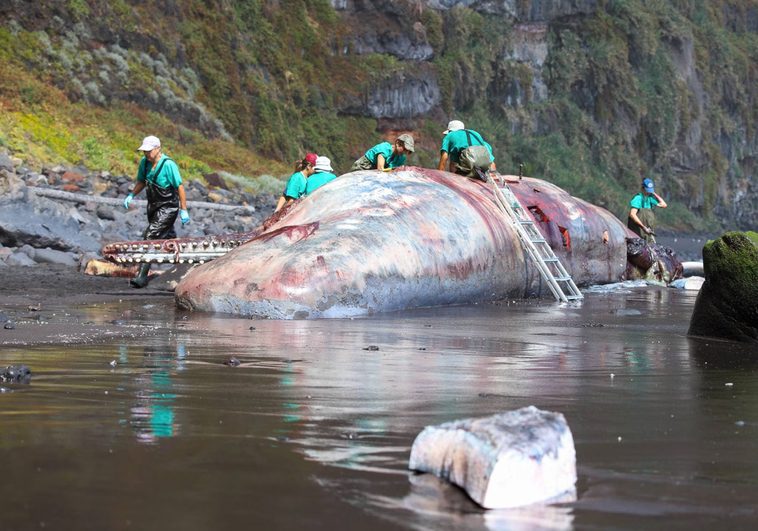When a veterinary pathologist and his team were called in to determine the cause of death of a sperm whale washed ashore in the Canary Islands, they found the answer in a rare substance produced by the whale itself.
The 13m male whale had been reported in May when it was found dead on La Palma’s Nogales beach, but after attempts to tow the mammal to a port had failed it was decided that the necropsy should be carried out on site. The results were reported only recently.
A team arrived from Gran Canaria and Tenerife led by University of Las Palmas expert Prof Antonio Fernandez Rodriguez, director of the university’s Institute of Animal Health & Food Security (IUSA). Because the whale seemed light for its size he suspected a gastro-intestinal problem, and was checking the whale’s stomach when he felt a large obstruction.


He went on to remove an unusually large lump of ambergris, weighing almost 10kg and measuring about 60cm across.
Ambergris, or grey amber, is highly valued by perfumers for its sandalwood-like fragrance, but mainly because it contains an alcohol that acts as a fixative to prolong the life of scents. The size of the rare substance Prof Fernandez had removed meant that it would be worth about £430,000 at market rates.
Giant squid beaks
Ambergris is created within the digestive system of sperm whales. One theory is that the waxy secretion is formed by the bile duct to ease the passage of indigestible remains of the cephalopods on which the whales feed, such as squid beaks and cuttlebones. Another is that it is composed of the indigestible remains themselves.
Any ambergris formed in a whale is usually excreted eventually, and is sometimes found floating in the sea or washed ashore, leading to its common description of “floating gold”. But in the La Palma whale the lump had grown too big to be expelled naturally and had ruptured its host’s colon, killing the whale as sepsis set in.

Trade in ambergris was banned by many countries alongside the global ban on whaling in the 1980s, and the largest amounts commercially collected today, typically in far smaller volumes, are found in the Bahamas.
The law in Spain (as in the UK) would allow the IUSA to sell their valuable discovery. A possibility is that any sale would go towards the relief of victims of a volcanic eruption that destroyed hundreds of homes and businesses on La Palma two years ago.
Whale milk on camera off Colombia
Still on the subject of rare whale secretions, marine biologists in Colombia’s Gulf of Cupica are delighted to have captured footage of a female humpback nursing her 900kg calf. While lactation itself is not rare, it had never been recorded before in the Colombian Pacific and only ever twice before in the world, according to the Macuaticos Foundation.
The video was taken last August but only recently released following a public presentation. It was obtained by locating a camera, GPS and audio recorder on the calf’s back using suction cups in a system designed to be removed after only a few hours.
Thousands of humpback whales travel north to breed off South and Central American coasts from June to November. The mothers’ milk contains up to 40% fat, enabling their calves to grow rapidly. Born weighing around 1 tonne and 4m long, they gain hundreds of kilograms before migrating as much as 5,000 miles to their feeding grounds in the Antarctic Peninsula.
Also on Divernet: Three big whale tales, Dwarf whale uses ‘squid tactics’, Divers couldn’t save whales in Yorkshire, Divers free ghost-netted humpback

